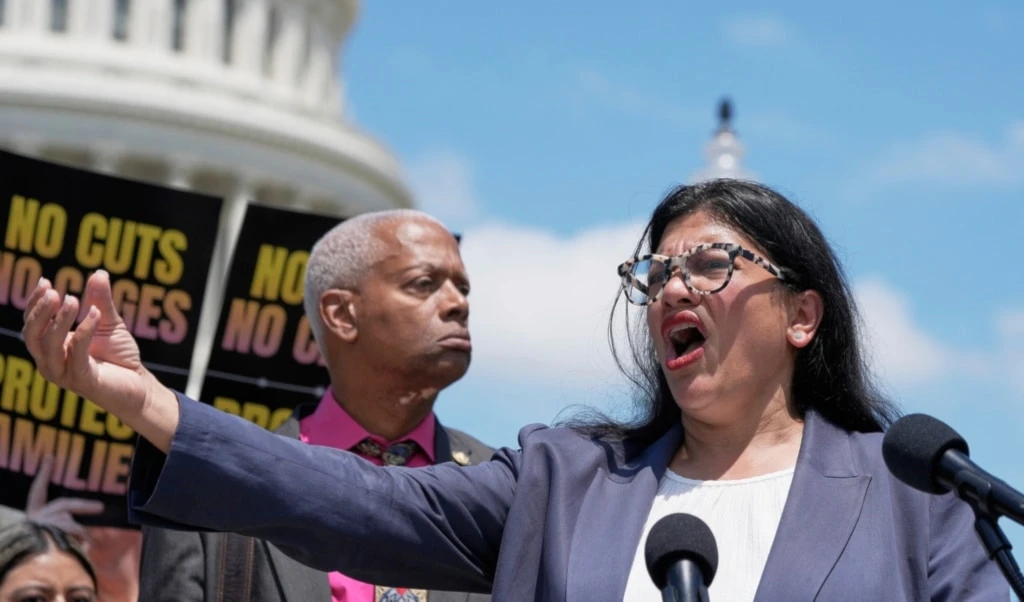Behind the scenes: Trump's decision to strike Iran mapped - CNN
A CNN report details Trump’s covert decision to strike Iran, exposing high-level strategy, last-minute diplomacy, and one of the most complex US military operations.
-

US President Donald Trump arrives to speak from the East Room of the White House in Washington, on Saturday, June 21, 2025, after the US military struck three Iranian nuclear (Carlos Barria/Pool via AP)
A recent CNN investigation has revealed how US President Donald Trump made the historic and secretive decision to strike Iran's nuclear facilities, a move that has significantly shaped the US foreign policy landscape.
On the evening of Friday, June 21, 2025, as Trump mingled at his New Jersey golf club, US B-2 stealth bombers were preparing to launch from Missouri, armed with 30,000-pound bunker buster bombs. Their targets: Iran’s nuclear facilities at Fordow, Natanz, and Isfahan. Despite his calm appearance, including a light-hearted exchange with OpenAI CEO Sam Altman, Trump had already given final authorization for what would become Operation Midnight Hammer.
According to the CNN report, part of the mission's success relied on strategic deception. Aircraft were deployed westward as decoys to mask the true direction of the strike force. By Saturday, Trump had returned to Washington, watching the operation unfold in real time from the White House Situation Room.
In a late-night address from the Cross Hall, Trump stated, “Tonight, I can report to the world that the strikes were a spectacular military success. Iran, the bully of the Middle East, must now make peace. If they do not, future attacks will be far greater and a lot easier.”
Though Trump publicly alleged that diplomacy remained an option, sources cited by CNN confirmed that the decision to strike had been made days earlier. Vice President JD Vance later affirmed, “Trump retained the ability to call off the strikes until the very last minute. But he elected to go ahead.”
Wider context
Planning for the strike had been underway for months. CIA Director John Ratcliffe warned Trump in early June that "Israel" was preparing imminent strikes on Iran. Trump and his national security team, including Defense Secretary Pete Hegseth and Gen. Dan Caine, held daily meetings to review options. Trump emphasized two key conditions: decisiveness and avoiding a prolonged war.
The operation, involving over 125 aircraft, was one of the most complex in US military history. It included seven B-2 bombers, surveillance jets, refueling tankers, and fighter escorts. A US submarine launched Tomahawk cruise missiles at surface infrastructure near Isfahan, while bunker busters targeted underground sites.
Gen. Caine later confirmed that Iranian forces did not engage US aircraft during the operation. Trump announced on Truth Social: “We have completed our very successful attack on the three Nuclear sites in Iran, including Fordow, Natanz, and Esfahan. A full payload of BOMBS was dropped on the primary site, Fordow.”
GOPs, Dems kept in the dark
While top Republicans were briefed in advance, many Democrats were informed only after the strikes concluded. Hegseth claimed this as a necessary precaution, noting that congressional leaders were notified once US aircraft had exited Iranian airspace.
The CNN report also highlighted the broader strategic context. Trump had issued a 60-day ultimatum to Iran in April, warning of consequences if negotiations failed. On day 61, following Israeli strikes, the US launched its own operation. Despite initial success, the long-term implications of the strike remain uncertain.
“If they do not [make peace], future attacks will be far greater and a lot easier,” Trump warned, leaving the door open to further escalation.
Read more: Trump pushes Iran regime change rhetoric, administration contradicts

 3 Min Read
3 Min Read









